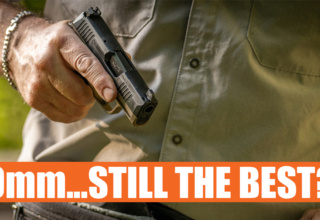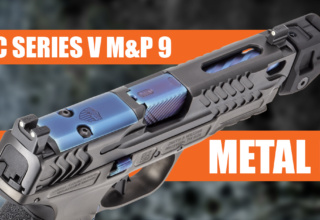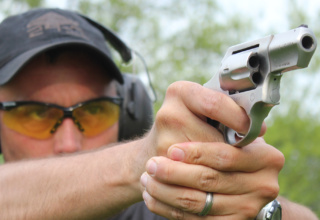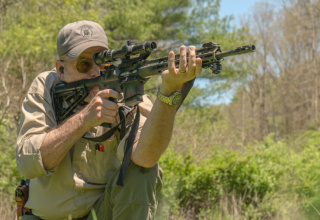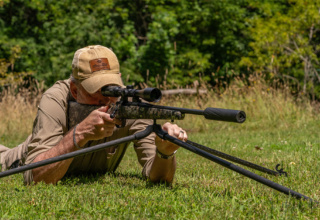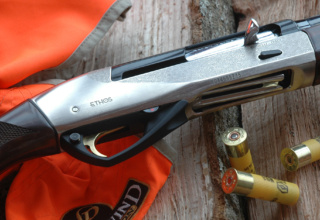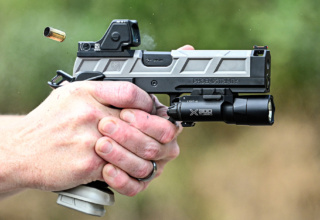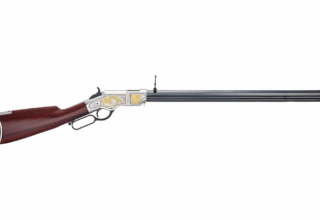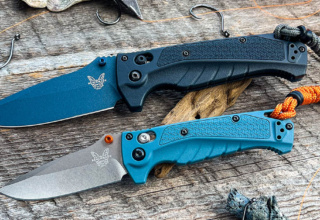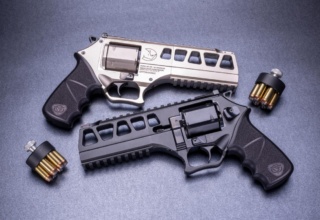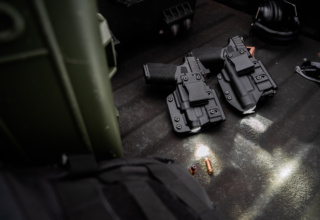A prime example of refined perfection, Wilson Combat’s EDC X9 2.0 blends superior craftsmanship and material construction to deliver a top-tier defensive handgun
by Richard Mann
In 2017, I received a new EDC X9 pistol from Wilson Combat to test. I was so impressed with the pistol I purchased it, and it has spent a lot of time in my holster ever since. The 1911, Browning Hi-Power, and the Glock are unquestionably the three best and most influential fighting pistols ever made. And, as I have said before, I think the best way to describe the EDC X9 is that it’s the result of a ménage à trios between those three pistols. The EDC X9 has the single-action operation and the great trigger of the 1911, the comfortable grip and compactness of the Hi-Power, and the reliability of the Glock. Wilson Combat’s new EDC X9 2.0 is even better.
EDC X9 Recap
The EDC X9 is available with or without an accessory rail and the pistol is finished in Armor-Tuff. It has a trimmed down stainless-steel slide and perfectly proportioned sights. It also incorporates a proprietary system designed to optimize functioning with the varying power levels of ammunition. But the real innovation with the EDC X9 is the grip frame. In the place of checkering, the EDC X9 has a deep-grooved diamond pattern on the front and back strap and in place of the grasping grooves on the slide.
What really sets the EDC X9 apart from the basic 1911 design it so closely emulates is its one-piece backstrap and the absence of the grip safety. You can release the EDC X9’s back strap by inserting a punch at the base of the grip, allowing it to pivot out for access to the internals. This backstrap is also modular and is an ingenious fix for the often-bemoaned grip safety that many consider a weak link in the 1911 design.
The 2.0 Upgrades
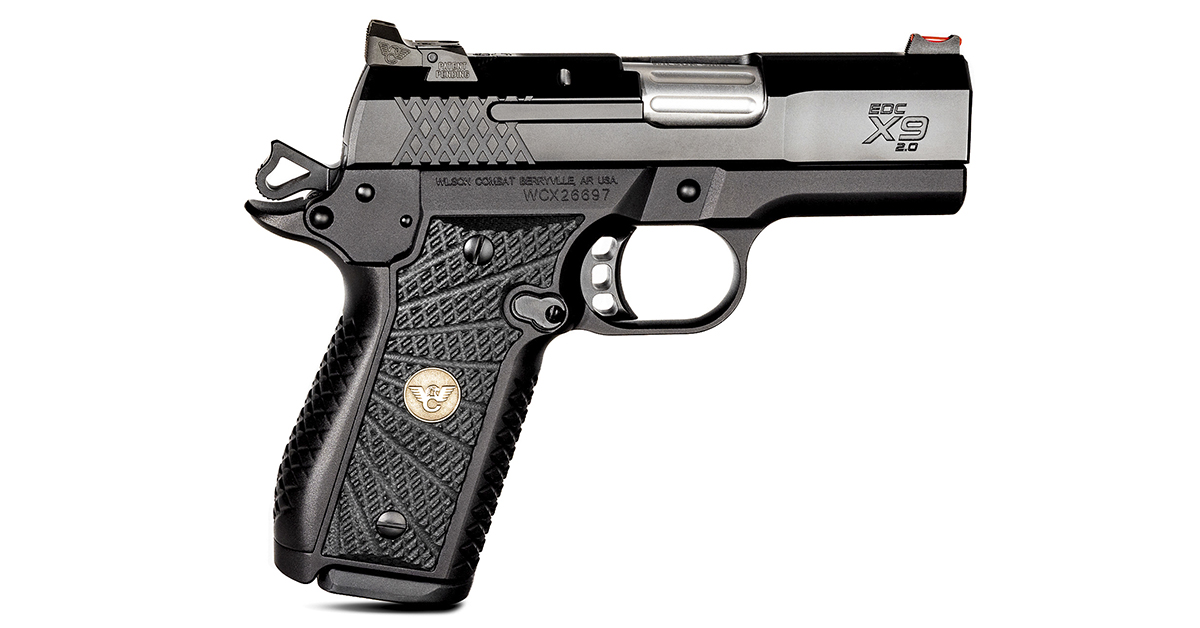
Though subtle, the upgrades on the EDC X9 2.0 are noteworthy. It features a new aluminum X-Frame frame design, which makes the EDC X9 more compatible with interchangeable grip panels, and Wilson Combat is offering six options to choose from. The 2.0 is also available with an optional compensated barrel for about $250 extra. (You can also return your EDC X9 to Wilson Combat for this retrofit but it’s expensive because it necessitates a new slide.) The compensator adds some length to the pistol, but a compensated EDC X9 2.0 with a 3.25-inch barrel is about the same length as an uncompensated 2.0 with a four-inch barrel.
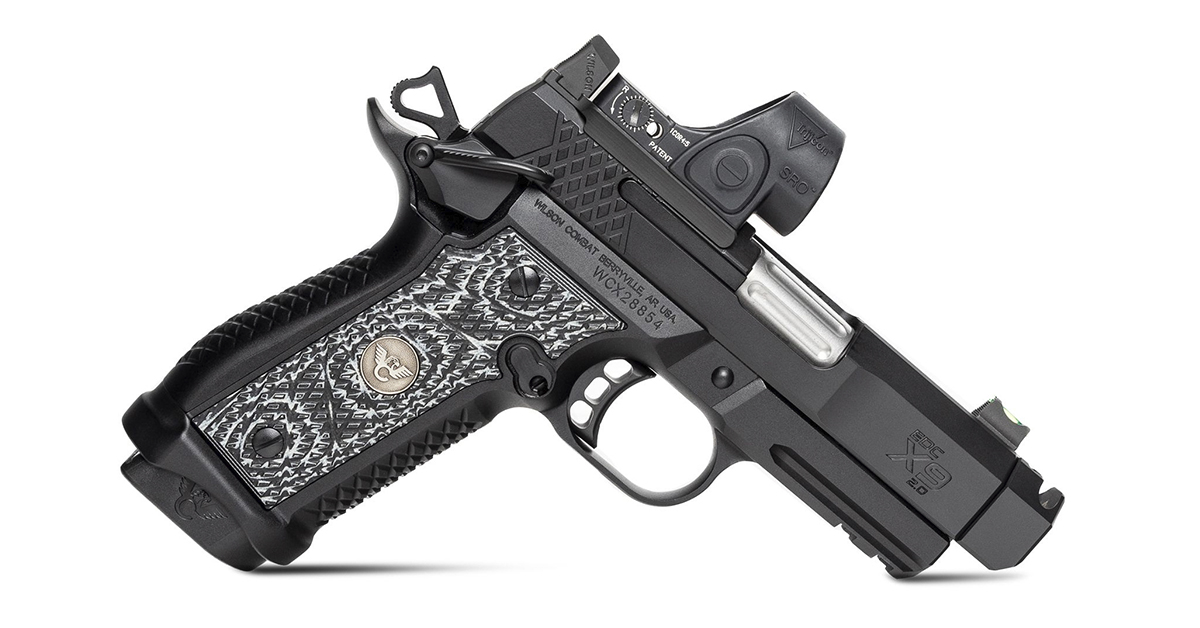
Base model EDC X9 2.0 pistols are available dealer-direct, mostly in a standard configuration. There is, though, the option to order direct from Wilson Combat, where you can have your EDC X9 2.0 built just like you want it. The options are seemingly endless and include Wilson Combat’s True Zero optics mount system, which is ideal for those who want to run a reflex sight on their carry gun. Other options include suppressor height sights, a short and/or flat trigger, and a Tritium front sight. If you want to enhance the appearance of your EDC X9 2.0, you also have the option of slide engravings and various color options.
On the Range
When I evaluate a carry gun, I have a standard testing regime I follow. First, I’ll run about 100 rounds of various loads through the pistol to get a feel for the gun and to establish if the sights are adjusted correctly. Next, I’ll go to the bench and test fire several loads for velocity consistency with a chronograph, and for precision at 10 yards. Finally, I’ll subject the pistol to the Forty-Five Drill and the Step-Back Drill, which are my two standard defensive handgun evaluation drills.
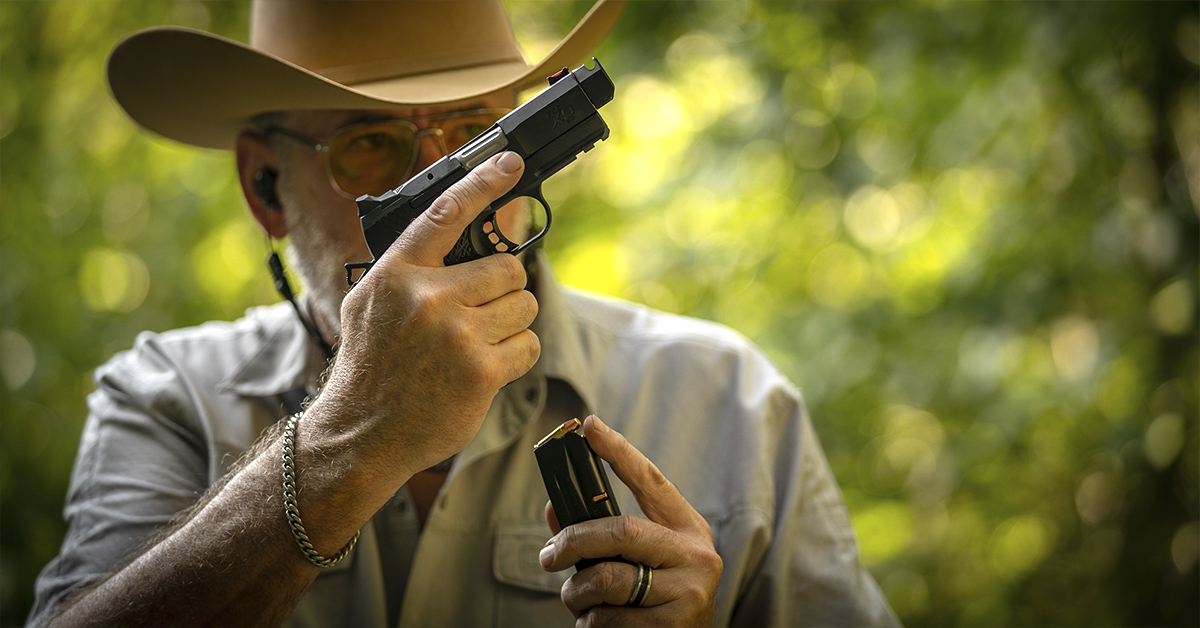
Shooting off-hand at 10 yards, I found the sights perfectly zeroed on the EDC X9 2.0, and when I went to the bench, itty-bitty five-shot groups were not a problem. With the four loads evaluated, the pistol averaged 1.18 inches at 10 yards. Wilson Combat supplies a test target with every pistol they make, and the one that came with the 2.0 I evaluated had a three-shot group fired at 15 yards that measured 0.58 inches. The EDC X9 2.0 comes with a precision guarantee of 1.5 inches at 25 yards. I cannot shoot a pistol that well, but I’ve seen the test shooters at Wilson Combat shoot, and they can.
With the Forty-Five Drill, you must draw and fire five shots into a five-inch circle, at five yards, in less than five seconds. I compared the performance of my original EDC X9 with the compensated EDC X9 2.0. With my EDC X9, I could routinely get all my hits in about three seconds…or just a tad more. With the compensated EDC X9 2.0, my times averaged between 2.6 and 3.0 seconds. On average, the compensated 2.0 allowed me to shoot this drill, clean, about 13% faster.
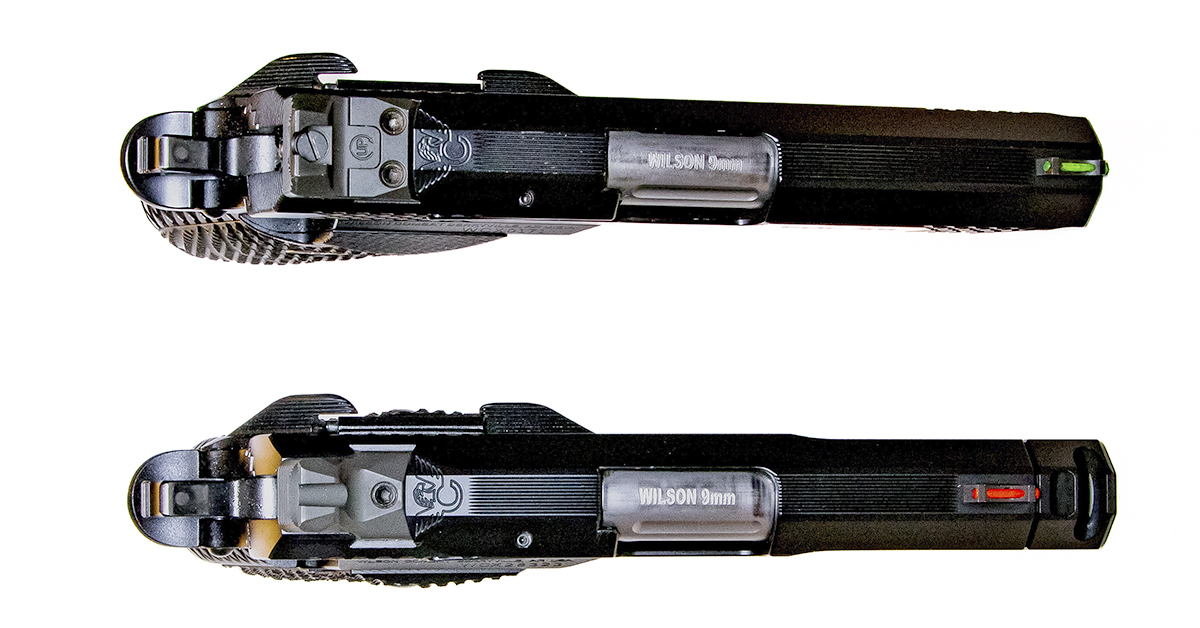
The Step-Back Drill is my favorite pistol evaluation drill, and the drill I most frequently use for practice. It requires a total of 10 shots. You start at five yards and fire two shots, and then two shots at 10 yards, 15 yards, 20 yards, and 25 yards. You draw from the holster for each two-shot string, and you time each two-shot string separately. The goal is to achieve 10 hits on an eight-inch target in less than 20 seconds. (You add the times for the five, two-shot strings together.) Overall, the compensated EDC X9 2.0 allowed me to register total times for all ten shots that were about 5% faster than those with the non-compensated, original EDC X9.
Shooting Results*
- Lehigh Defense 90-grain XD: 1293 (MV), 334 (ME), 0.97 in.
- CCI 115-grain Blazer FMJ (brass): 1125 (MV), 323 (ME), 1.37 in.
- Federal Tactical 124-grain HST: 1123 (MV), 347 (ME), 1.07 in.
- Wilson Combat 124-grain XTP HP +P: 1123 (MV), 347 (ME), 1.31 in.
* Reported average muzzle velocity (MV) and muzzle energy (ME) were established by firing 10 shots over a Caldwell G2 chronograph with screens 10 feet from the muzzle. Listed precision is the result of three, five-shot groups with each load from a sandbag rest at 10 yards.
Summary
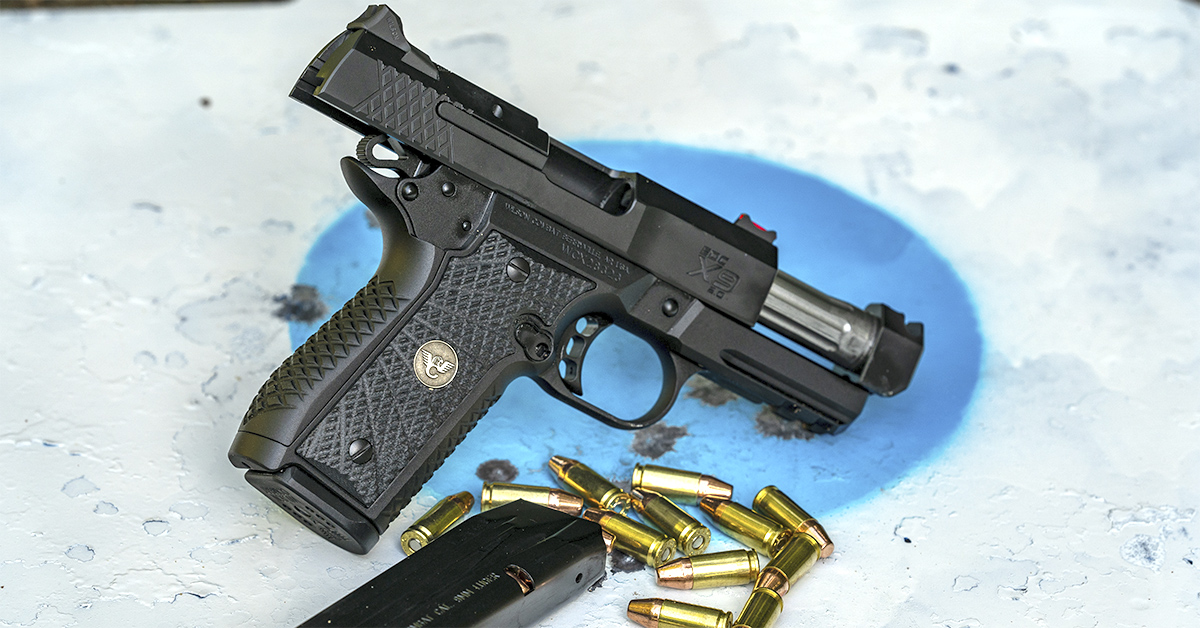
With its switchable grip panels, the refined one-piece grip frame of the EDC X9 2.0 is a clear and obvious improvement; however, if you already own an original EDC X9, I don’t think that alone is enough to warrant the upgrade. The 2.0 is available with a 3.25-, 4.0-, or 5.0-inch barrel and they’re priced between $3307 and $3415.
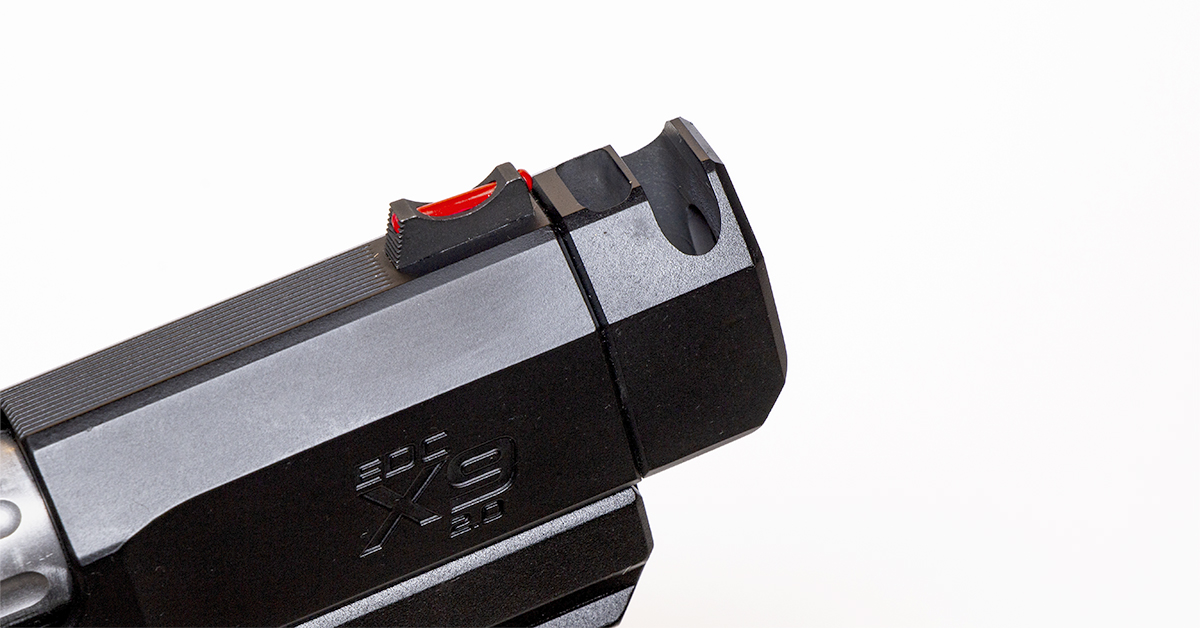
I’m not convinced that a compensator is necessary on a self-defense pistol. In fact, they can be a bit disconcerting when you’re doing retention shooting with the pistol tucked in close to your body. You’ll have to decide whether being able to shoot just as accurately, but between 5% and 15% faster, is worth it.
There is no question Wilson Combat pistols are expensive. A three grand investment in a firearm of any type is a major expense that deserves some serious forethought. If you want a pistol to just play with, a Wilson Combat EDC X9 2.0 might not be the right answer. But Wilson Combat does not build pistols to play with — they’re not toys — they’re serious pistols crafted to deliver an optimum level of performance you can trust for the rest of your life. You can also pass a Wilson Combat pistol down the line and the recipient can do the same. I know where my EDC X9 will end up, and it’s comforting to know my son will be as well armed as he can be.
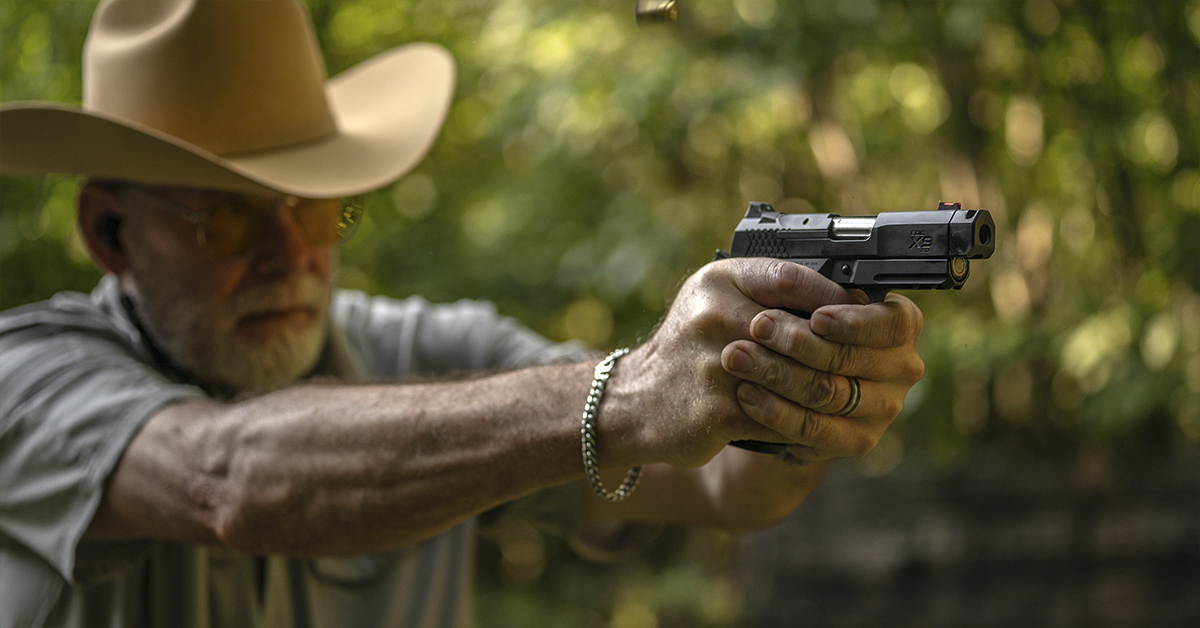
Wilson Combat EDC X9 2.0 (w/compensator) Specifications
- Chambering: 9mm Luger
- Barrel: 3.25 in.
- Overall Length: 7.4 in.
- Sight Radius: 5 in.
- Height: 5.25 in.
- Width: 1.4 in.
- Weight: 28.6 oz. (empty)
- Finish: Armor Tuff
- Sight: Battlesight rear, fiber optic front
- Capacity: 15 rounds
- Grips: black G10 w/starburst pattern
- Base Price: $3307 (base price); $3564.95 (as tested)
- Why the 9mm? - December 8, 2025
- TRAINING BASICS: The Walk Back Drill - November 19, 2025
- FIELD TESTED: The Springbok Tripod - October 22, 2025


